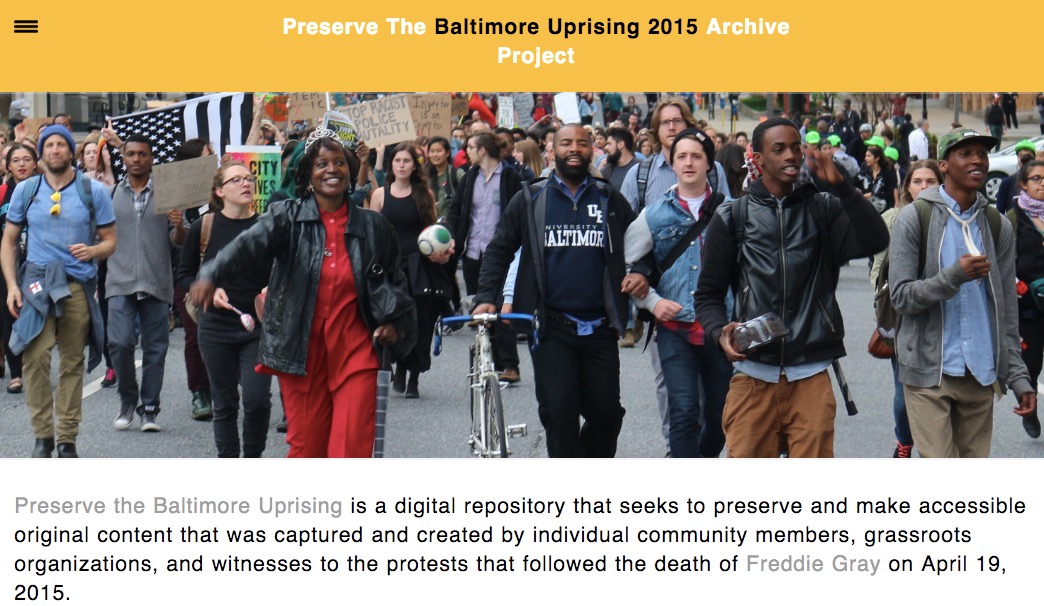Baltimore: Digital Archive of Freddie Gray Protests/Baltimore Uprising Launches Online
From the Maryland Historical Society:
Maryland Historical Society announces the launch of a website [Baltimore Uprising 2015 Archive Project] containing thousands of images documenting the unrest and cleanup efforts in the wake of Freddie Gray’s death.
More than 12,000 images were submitted, including photographs taken from cell phones and cameras, audio segments, oral histories, and more than 2,000 intergovernmental emails surrounding the unrest that were released by Baltimore City. The images depict activists, demonstrations, the presence of the National Guard, police officers, military hardware, and more.
“There’s a lot of material on the Internet, but no guarantee that those locations will exist indefinitely, says Denise Meringolo, Associate Professor of Public History at UMBC, “It’s important to ask people to think about what will survive into the future, and what organizations will survive. It was fantastic to have the Maryland Historical Society say ‘let’s partner here,’ to make sure those voices survive regardless what happens to Youtube or Twitter.”

From the Christian Science Monitor:
The website’s launch mirrors a growing trend of pushing for a re-examination of historical events around America’s history with race and racism, including an exhibit launched by Princeton University that reconsiders the legacy of Woodrow Wilson in terms of views on race and a move by several universities to acknowledge their ties to slavery.
But the inclusion of a variety of citizen voices in the historical society’s online archive has been notably enhanced by the growing use of technology to document events – including unfolding protests – as they occur, often creating a parallel narrative to the one generated by mainstream media outlets.
Read the Complete Article
Direct to Baltimore Uprising 2015 Archive Project
Filed under: Associations and Organizations, Digital Collections, Digital Preservation, News, Video Recordings
About Gary Price
Gary Price (gprice@gmail.com) is a librarian, writer, consultant, and frequent conference speaker based in the Washington D.C. metro area. He earned his MLIS degree from Wayne State University in Detroit. Price has won several awards including the SLA Innovations in Technology Award and Alumnus of the Year from the Wayne St. University Library and Information Science Program. From 2006-2009 he was Director of Online Information Services at Ask.com.


